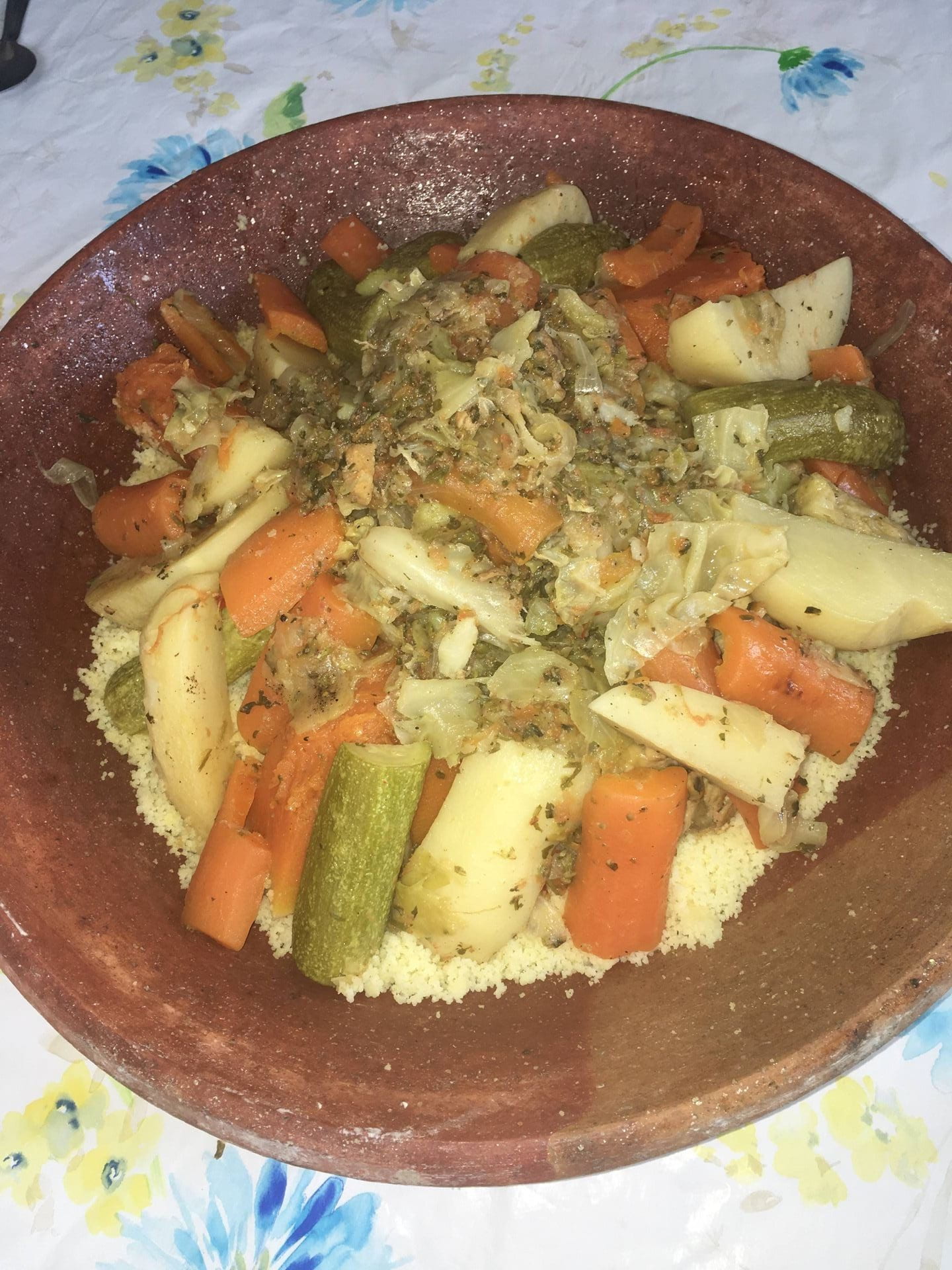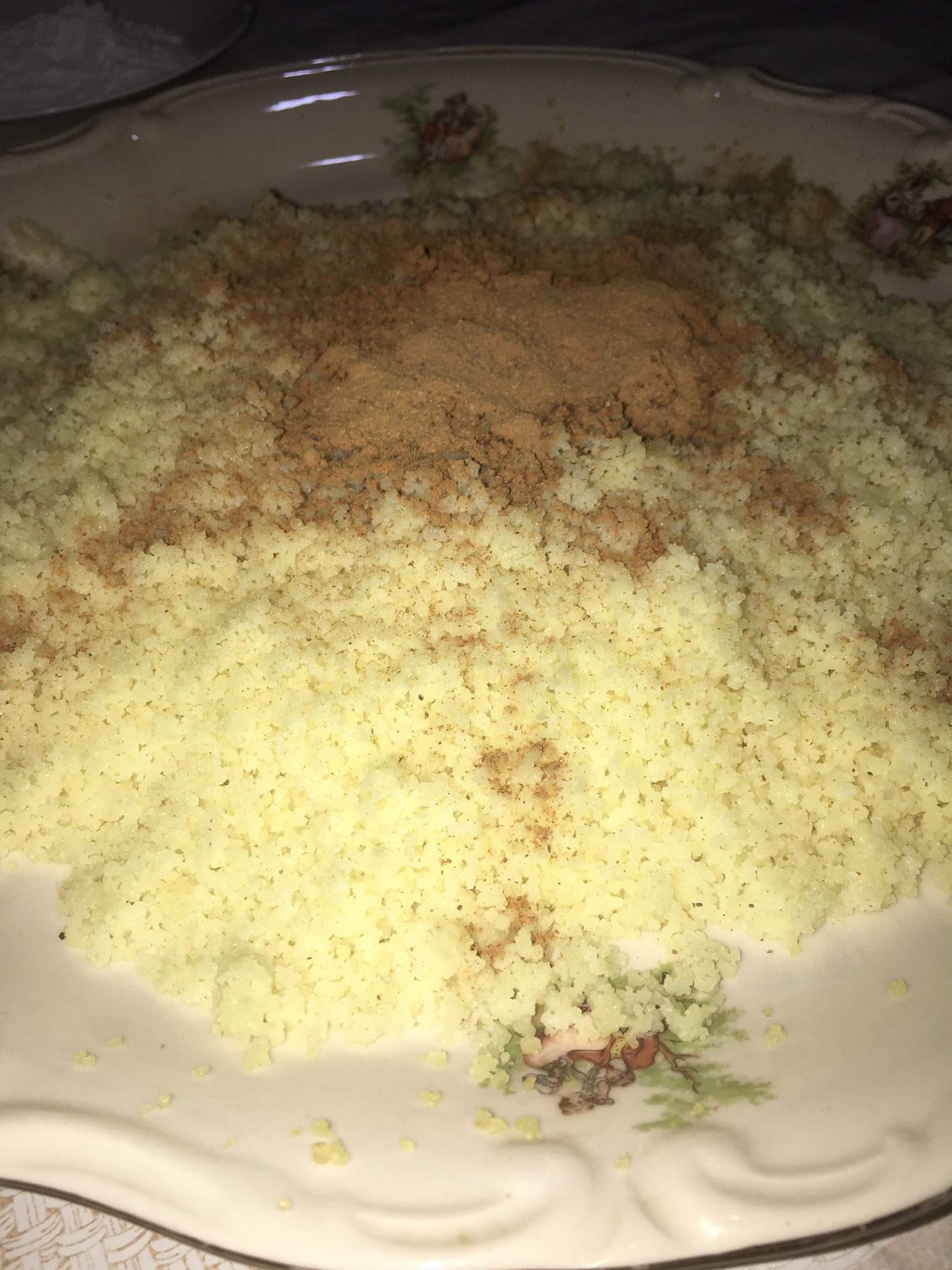“It’s couscous Friday!” my friends and I would proclaim when we started to think about what we would be having for lunch on a Friday. And inevitably, I would return to my homestay with couscous waiting for me on the table.
Couscous is a dish made from semolina—hard grains left after the milling of flour—that is often served with stew, vegetables, and chicken. For lunch, my host parents would place a large earthenware platter in the middle of the table full of couscous. The hot steam leaving the platter had a delicate aroma, and I could make out the pleasant smell of the vegetables added to the couscous: carrots, cabbage, pumpkin, and potatoes. The semolina—grainy, yet smooth as soon as it hit my tongue—was reminiscent of grinded rice.
Grabbing our spoons, we would all simultaneously dig into the platter to eat.
So why Friday? According to my host sister, couscous takes an entire day to make. Thus, Moroccans typically dedicate time to make couscous on special occasions. Fridays, or Jum’ah, is a special day for Muslims around the world and in Morocco. On this day, Moroccans visit the mosque for prayer around noontime then go home—or to a restaurant—for delicious couscous.



